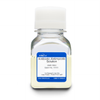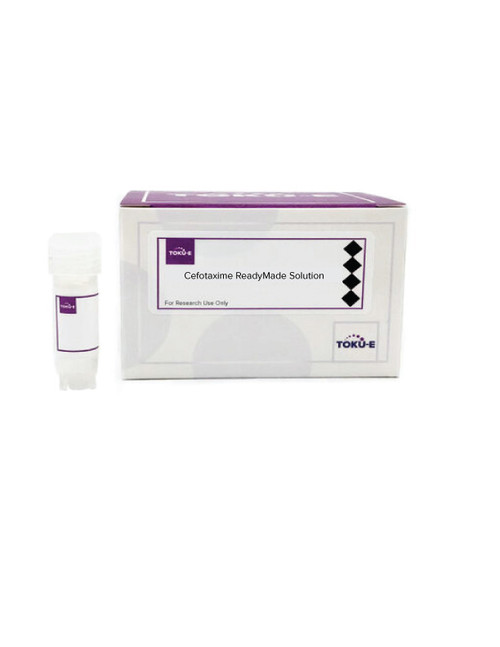Antibiotic-Antimycotic Solution (100X) (syn: Anti-Anti) is a solution is composed of Penicillin (10,000 units/mL), Streptomycin (10,000 ug/mL), and Amphotericin B (25 ug/mL) in 0.9% NaCl that is used to control Gram-positive and Gram-negative bacteria and fungi in eukaryotic cell culture.
| Mechanism of Action | The penicillin in the mixture targets cell walls of susceptible bacterial cells by preventing peptidoglycan linkage followed by the triggering of autolysis. Streptomycin disrupts bacterial protein synthesis by binding the ribosomes. Amphotericin B, the anti-fungal element, works by increasing the permeability of the fungal cell membrane by binding to ergosterol. |
| Eukaryotic Cell Culture Applications | Anti-Anti is used in cell culture to control contamination when working with typical cell lines (HeLa cells and NIH3T3). Anti-Anti solution (TOKU-E) was used in RPMI 1640 media to grow primary human fibroblasts (Naleway et al, 2013). When working with cell cultures in bioreactors for the purpose of expressing different products of interest in biotechnology, the risk of loss to contamination cannot be over-stated . The usefulness of Anti-Anti to control contamination was evaluated in toxicity studies using serum-free suspension-adapted 293 cells. Authors found this solution can be used at concentrations up to 50 IU/ml for the culture of this cell line, with no apparent effect upon cell growth. (Negrete et al, 2008). Anti-Anti was used to wash follicular aspirate and granulosa lutein cells to avoid microbial contamination during human oocyte retrieval for assisted reproductive techniques (Campos et al, 2012). Anti-Anti solution was used to wash goat embryos prior to incubation with oviduct and uterine cells, for enhanced development of embryos into blastocysts (Prichard et al, 1992). |
| Molecular Formula | C16H18N2O4S; C21H39N7O12; C47H73NO17 |
| Assay | Amphotericin B: 25-30µg/mL Penicillin G Sodium: 10000-12000 units/mL Streptomycin Sulfate: 10000-12000 µg/mL |
| References | Campos CO et al (2012) Preventing Microbial Contamination during Long-Term In Vitro Culture of Human Granulosa-Lutein Cells: An Ultrastructural Analysis. Obstet Gynecol. 2012;2012:152781 PMID 22988519 Naleway JJ et al (2013) Metabolic lysosomal enzyme probes. Poster presented at Experimental Biology conference. Apr 20-24, 2013 Boston, MA poster 576.1 Negrete A, Ling TC. Lyddiatt A (2008) Effect of Pluronic F-68, 5% CO2 Atmosphere, HEPES, and Antibiotic:Antimycotic on Suspension Adapted 293 Cells. Open Biotchnol. J. 2:229-234 Prichard JF et al (1992) In vitro co-culture of early stage caprine embryos with oviduct and uterine epithelial cells. Human Reprod. 7(4):553-557 PMID 1522202 |







